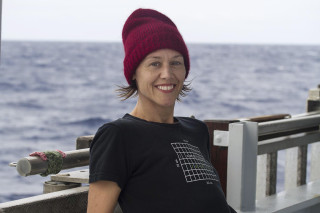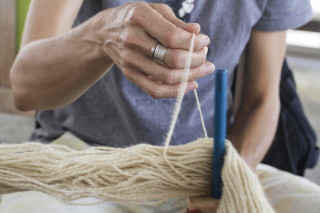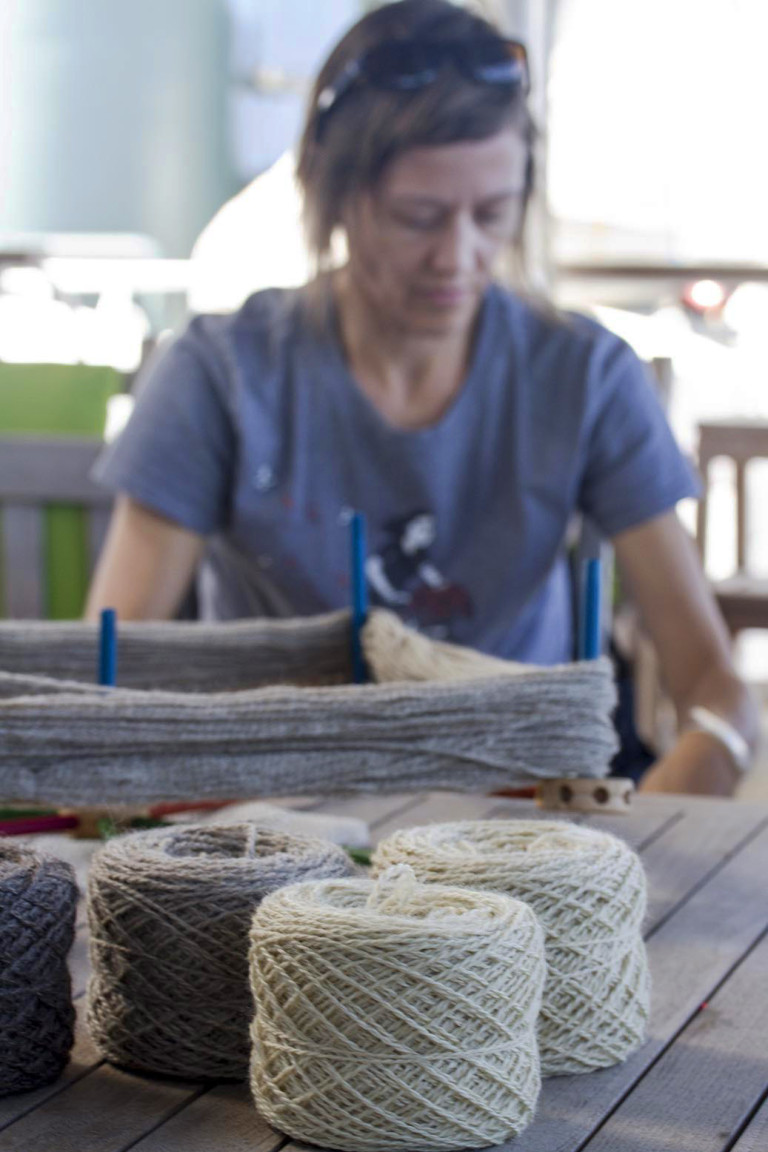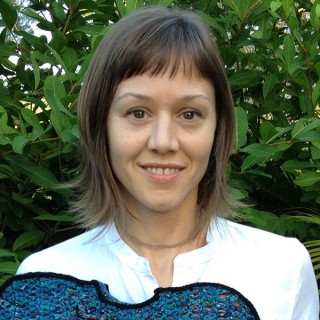Aloha! My name is Michelle Schwengel-Regala, and I am the current Artist-at-Sea in a new program with the Schmidt Ocean Institute. This program selects an artist to join a science crew during a research voyage aboard R/V Falkor. This ship is outfitted to not only map the bottom of the ocean but also to support the needs of the science teams on board to conduct oceanographic field work. While at sea my job is to make artwork related to the scientific mission of this voyage. Collaborating with scientists is something I regularly did during my years as a scientific illustrator and often do while making fine art. On-the-job learning is something I deeply enjoy about my art practice and I am very happy to be in that mode here.
First Impressions

The first couple days aboard the Falkor had me wondering how I would fare at sea. Like many of the other people aboard, I put on a prescription patch to avert motion sickness. By mid-morning the first day I was feeling rather uncomfortable from the boat’s motion. I was scheduled to do a video interview and even considered postponing it, but decided to press on. I’m glad I did, because the mental focus took my mind off the physical discomfort and I soon got my sea legs. For a few more days I experienced blurred vision, an unfortunate side effect of the medication, making close detailed work quite difficult. That unexpected side effect eventually subsided and now I am thoroughly enjoying this experience.

My art is most often driven by a desire to learn and share science. I strive to bring people closer to nature through my work. While studying taxonomy and conservation biology in college, I also became a science illustrator: a perfect combination of my interests and skills in science and art. Creating visual art from scientific research is challenging and invigorating. In 2005 I moved to Hawai’i and shifted my focus to natural history fine art and fiber art, making solo pieces as well as organizing community/participatory projects. My most recent major work was an installation of life-size hadal zone creatures created from fiber and repurposed materials. I strive to minimize my environmental impact & inspire the same in others. While on the Falkor I am examining the ship’s waste stream to see if there are items with potential. Stay tuned to see what lengths I’ll go to for workable materials.
Objectives
My primary objective was to create artwork which filters and features the data being collected by the science crew — a tall order since prior to boarding the ship I my knowledge was limited on the means of collections, how samplings were performed, or what the observations would look like. Once the data started appearing on the monitors at our first sampling station I got a better idea of what to expect.

Having exhibited “Hook the Reef: the Hawai’i Hyperbolic Crochet Coral Reef” (part of the world’s largest participatory art project with the Institute For Figuring) and my hadal zone installation, I am eager to continue exploring marine themes in my next works. I typically focus on macrobiology, but with my background in science illustration including design of information graphics, I am interested in this voyage’s mission to gather data about smaller forms of life and conditions in OMZs. Working with sets of numerical data rather than morphology opens up interesting artistic pathways for me, specifically, plans to create textiles containing seemingly abstract patterns through technological arrangements including binary & QR codes. Perhaps they are not so different from patterns in nature. I am thrilled to be part of this modern day Voyage of Discovery, collaborating with scientists, helping visualize their research for various audiences.
Written by — Michelle Schwengel-Regala
You can follow behind the scenes on herinstagram feed: @spamknitsubi

